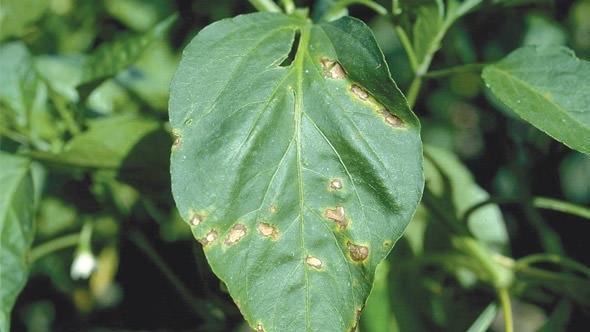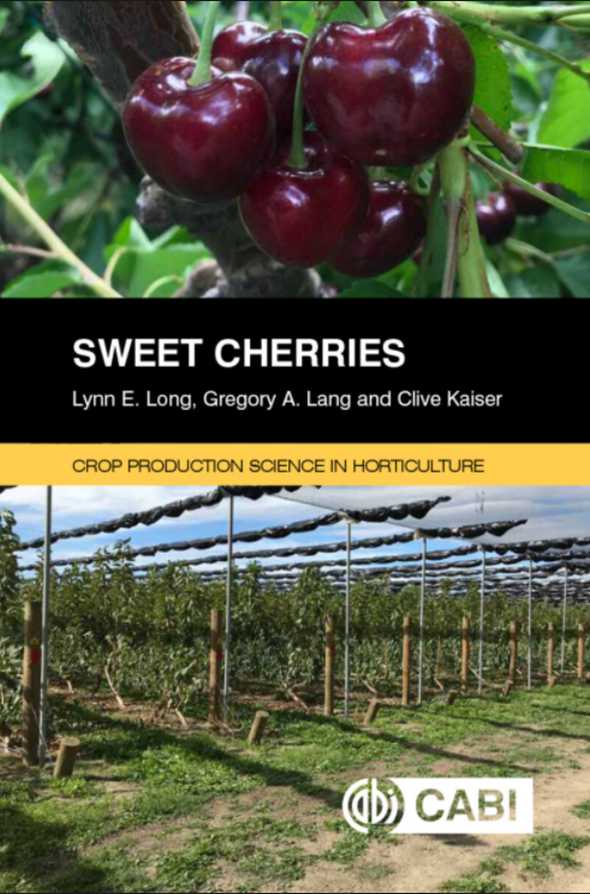New Book Designed To Help Cherry Growers
Gregory Lang began getting an inkling there was a need for a book on sweet cherry production right around the turn of the millennium when he noticed that growers who were experimenting with transitioning from the old orchards of the past, with their monster trees and absurdly long harvest ladders, were struggling to move to modern orchards of trees on dwarfing rootstocks, which became commercially available in the late 1990s.
Sweet cherry growers weren’t accustomed to managing cherry trees on dwarfing rootstocks, says Lang, who has been American Fruit Grower and Western Fruit Grower’s cherry columnist since 2014. The growers thought the new rootstocks were amazing, because the trees were so precocious, enabling production in the second or third year instead of waiting until the fifth leaf on the big old trees.
“But growers had minimized their pruning because the trees were so small,” Lang sighs.
The lack of training led to big problems because, without specialized management that is critical in the earlier years, the leaf-to-fruit ratios were getting all out of whack. Growers began to think the smaller trees naturally produced smaller fruit, which was definitely not the case. They didn’t realize the types of pruning done in the past to prevent the standard trees from getting too large needed to be changed for the smaller trees to reinvigorate fruiting wood and produce bigger fruit.
“So in about 2010, Lynn (Long) and I realized we needed to start compiling the new knowledge, ideas, and experiences on high-density cherries,” he says, “because there has never been a comprehensive book on cherry production to our knowledge.”
Long, a recently retired Oregon State University Professor and Extension Horticulturist, and Lang, a Professor of tree fruit physiology at Michigan State University and program leader for the stone fruit physiology laboratory, co-wrote “Sweet Cherries” with Clive Kaiser, a Professor at Oregon State University and Interim Director of Hermiston Agricultural Research & Extension Center.
Lang notes that not only has Long retired recently, his own retirement is not too far off, yet another reason to do the book now.
“One of the cool things about the book is that it’s the culmination of our careers; we’ve got decades of knowledge and experiences that we’ve pulled together in the book,” he says. “Not to mention the fact probably no one has spent more time traveling the world talking to cherry growers than Lynn and I.”
Being one of the most potentially profitable tree fruits to grow, tremendous amounts of sweet cherry acreage have been planted in the past 20 years worldwide. Besides that, another reason for the book is the massive change in the industry during that time. Something as simple as a listing of all the new varieties that have come out was not previously available.
As growers know, there’s been a lot more change in the industry than just the introduction of new varieties. For example, labor-saving technology such as mobile platforms have popped up in the last decade, and Lang says little information on designing orchards to utilize these technologies has been published.
Lang says he expects the book to appeal to experienced growers and newcomers alike. The chapter on orchard establishment won’t contain a lot of new information for the veteran grower but likely will be the go-to chapter for the newbie. However, another chapter, “Sweet Cherry Pruning Fundamentals,” sounds basic, but Lang says it’s really a trouble-shooting guide for experienced growers, especially as they adopt and manage new training systems.
Those disappointing orchard tours in the early 2000s are still vivid memories for Lang. He recalls how he had to tell growers with five-year-old trees that key training decisions must be made in the second or third leaf, and they would need to do some severe cutting to get the trees back to where they should have been.
“Years from now, I want to go into an orchard and have the grower tell me he or she made critical decisions in year two or three because of something they read in the book,” Lang says, “and I’ll feel really good knowing I helped them along the way.”
Train For Success
Editor’s Note: The following is an excerpt from the new book, “Sweet Cherries.” It comes from the beginning of Chapter 7, “General Principles of Orchard Training Systems.”
Canopy architectures and training systems for fresh market sweet cherry production have been evolving rapidly over the past two decades, generally accelerating with the advent of vigor-controlling and precocious rootstocks. Training systems should be considered to be dynamic and continuously evolving, as every grower and orchard site is different, with inherent traits that lead to subtle modifications of initial ideas and training concepts that can significantly affect their ultimate degree of success.
Sweet cherry cultivars vary in both growth habits (from extremely upright, such as ‘Lapins’, to extremely spreading, such as ‘Sweetheart’, to even somewhat pendent, such as ‘Anderson’) and fruiting habits (from predominately spur-bearing, such as ‘Lapins’, to predominately non-spur bearing, such as ‘Kordia’ and ‘Regina’). Adoption and modification of canopy training system concepts and guidelines certainly must consider and adapt to these inherent growth and fruiting habits.
Similarly, canopy training decisions must take into account the various factors that comprise overall orchard vigor, such as soil fertility, depth, and texture (e.g., water-holding and cation exchange capacities); climate (growing season length, cloudiness/humidity and daily solar radiation levels, diurnal temperatures, windiness, rainfall); and rootstock vigor.
In addition to rootstock effects on vigor, they can also affect anchorage and scion growth habit: e.g., Mazzard, mahaleb, Colt, Krymsk 6, and Gisela 12 tend to confer more upright growth to scions, whereas Gisela 3, 5, and 6 tend to confer more spreading habits. Finally, each orchard operation may place different priorities on management factors that can affect training system outcomes, such as labor skill level, availability, and prevailing hourly wages; scale of the overall orchard operation; and capacity for attention to detail.
The goal for imposing an orchard training system is to establish a structural tree canopy framework that best provides the potential to produce profitable quantities of marketable fruit. Large trees take many years to fill their allotted orchard space and generally result in complex canopies that have non-uniform light interception and distribution simply due to their size and difficult accessibility for labor. These tend to have low input costs for tree training and high input costs for harvest, as well as mixed fruit quality.
Modern training systems have focused on higher densities of smaller trees that have higher orchard establishment costs but allow earlier yields and therefore earlier returns on investment, facilitate more efficient labor inputs and more systematic canopy development and renewal of fruiting wood, and more uniform light distribution for more uniform fruit quality.
This chapter will address more than a dozen potential sweet cherry canopy training systems, which certainly is not a comprehensive list of all of the ways growers can and have pruned cherry trees over the years. What is intended is a discussion of some of the key cherry training techniques and concepts, and particular benefits and limitations, to help growers determine how they might adopt or mix-and-match training systems for their goals, cultivars, rootstocks, orchard sites, and labor situations.
Published by CABI, “Sweet Cherries” is 391 pages and is available in paperback or in an electronic pdf format for $60 at Styluspub.presswarehouse.com.










